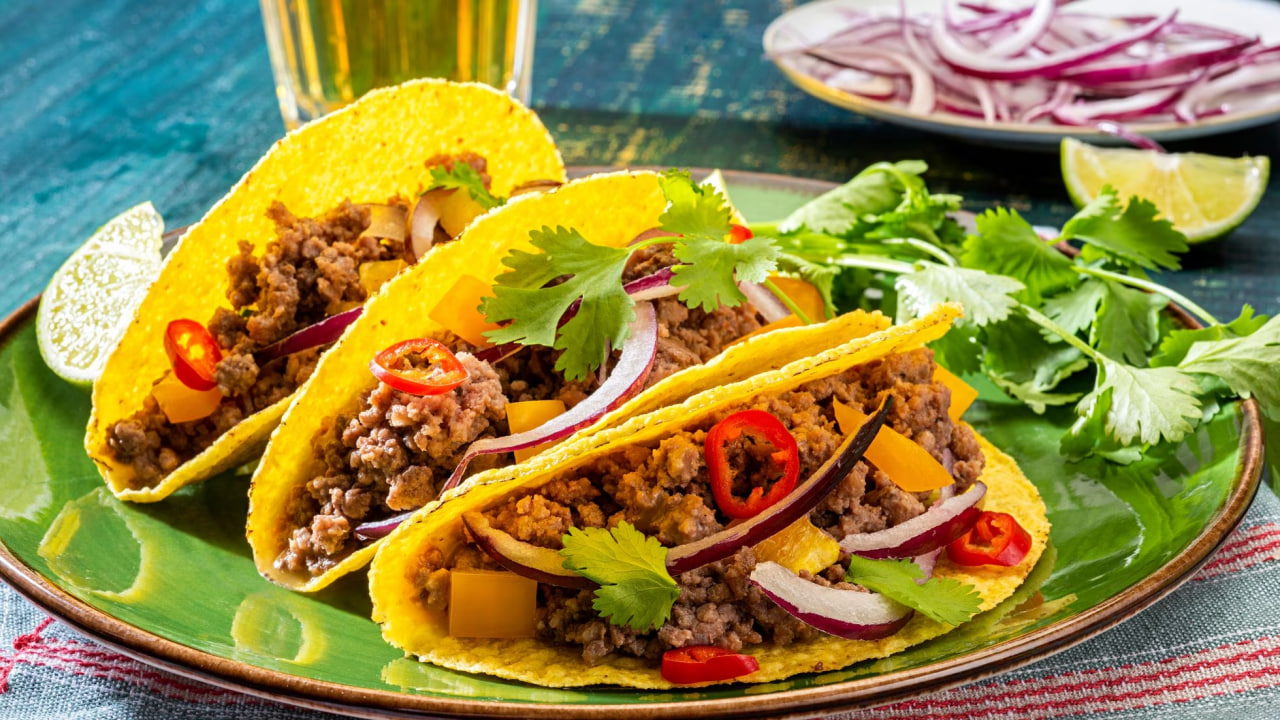From humble street-side taco stands to Michelin-starred restaurants, the love of this food only continues to grow in the U.S.
A smorgasbord of regional cuisines with unique flavors
Latin America is home to a diverse array of regional cuisines, from Mexican to Ecuadorian, Peruvian to Argentine. Each has its unique flavors and ingredients, brought about by the fusion of indigenous, European, African and Asian influences that shaped Latin America’s history. Take, for example, the Peruvian lomo saltado, a mouth-watering fusion of Spanish, Chinese, and indigenous flavors with stir-fried beef, vegetables, and potatoes served with rice. Or the savory and spicy Venezuelan and Colombian arepas, which showcases the cuisine’s pre-Columbian roots with a corn-based bread, filled with a variety of ingredients like cheese, meat, beans and avocado.
The Latin American journey to plates in the US
Even before becoming part of the United States, certain Latin American culinary traditions had already established themselves in Florida and various western states. Meanwhile, others made their way into the country, starting with the initial wave of migration from countries such as Mexico, Cuba, and Puerto Rico in the mid-20th century.
Avocados, quinoa and plantains — just a few staples of Latin American cuisines — have now become commonplace in many American pantries. According to Statista, the U.S. per capita consumption of fresh avocados amounted to approximately 8.43 pounds in 2021, up from 2.2 pounds in 2000. Quinoa, a flavorful grain from the Andes, has also seen a remarkable rise in popularity due to its health benefits and versatility in recipes.
“These days, tortillas outsell burger and hot dog buns; sales of tortilla chips trump potato chips; and tacos and burritos have become so ubiquitously ‘American,’ most people don’t even consider them ethnic,” wrote journalists Suzette Laboy and J.M. Hirsch. It’s just another indicator of the changing demographics in a country that is nearly 20% Hispanic.
As the New York Times reported way back in 1992: “Ketchup, long the king of American condiments, has been dethroned. Last year, salsa … took the condiment crown, outselling ketchup by $40 million in retail stores.” David Weiss, the president of New York-based Packaged Facts Inc. told the Times back then that “the taste for salsa is as mainstream as apple pie these days.” Even George Costanza knew this. “You know salsa is the number one condiment in America right now,” he said on a 1992 episode of Seinfeld.
The culinary giants transforming Latin American cuisine
Latin American chefs have made a name for themselves in the United States and around the world, using their talent and passion for their region’s culinary arts to broaden the American palate.
Chef Gastón Acurio has been credited with introducing Americans to the complex flavors of Peru. With his successful chain of La Mar Cebichería Peruana restaurants in San Francisco, New York, and Miami, Acurio has put Peruvian food on the map. Nelson Milan, a food critic for Eater magazine, says: “American palates have evolved so much in recent years thanks to chefs like Gastón Acurio who are introducing us to new flavors, ingredients, and culinary techniques.” Food critic Elise Craig wrote in Condé Nast Traveler magazine: “Cebiche, cebiche, cebiche. It’s what La Mar is known for… If you can only handle one, go for the clasico, the catch of the day with leche de tigre, red onion, habanero, corn, and sweet potatoes.”
Enrique Olvera is perhaps the most famous Mexican chef working today. His Pujol restaurant was ranked #1 in Mexico and #9 in the world at the World’s 50 Best Restaurant Awards. Olvera is a pioneer of a new contemporary Mexican style of food, which uses traditional, local ingredients with unusual flavor combinations. His signature “Mole Madre, Mole Nuevo” consists of two concentric rings of the traditional Mexican mole, one of which is aged for 2,500 days. It’s served alongside a steamy dish of baby corn with chicatana ant mayonnaise. That’s right — ants — with a pleasantly smoky taste and crunchy texture.
Street food
Street food, traditionally less refined but bursting with flavor, has been a significant ambassador of Latin American food culture to the United States. These foods were born out of necessity, innovation and creativity, and often represent the heart and soul of Latin American cuisine. From tacos to empanadas, these simple yet delicious foods have won the hearts and palates of many Americans.
Tacos from Mexico have certainly taken center stage in the American street food scene. These humble yet flavorful soft tortillas are filled with everything from pork, beef and chicken, to vegan options like beans and grilled vegetables. Garnished with fresh cilantro, onions, and a squeeze of lime, it’s hard to resist them. National Taco Day, celebrated on October 4 every year, is a concentrated version of the “Taco Tuesdays” many restaurants offer in a bid to bring in crowds.
Similarly, empanadas, baked or fried pastries filled with meat, cheese, or other ingredients, have become a go-to snack or meal for many Americans. Brought by immigrants from various countries like Argentina, Colombia and Chile, each version of this dish brings with it a unique twist whether it’s the dough, the filling, or the method of cooking. These handheld delights are perfect for on-the-go eating and have found their place in food trucks, local shops, and even in gourmet restaurants across the United States.
Source: English Elpais







